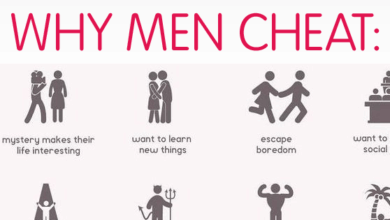
Introduction: Why Healing and Growth Go Hand in Hand
Every relationship is a meeting of two stories. Each partner brings not only love, dreams, and joy but also wounds, fears, and past experiences. Sometimes those wounds are fresh—a recent breakup, family conflicts, or self-esteem struggles. Other times, they’re buried deep in childhood experiences.
When two people fall in love, it’s not just hearts that connect; it’s histories colliding. And that’s where the challenge begins. Without intentional growth, old patterns resurface. Insecurities lead to jealousy. Misunderstandings spiral into arguments. Silence replaces laughter.
But relationships don’t have to crumble under pressure. Couples who actively choose to heal together—supporting each other’s growth while tending to their own—find themselves building bonds that are not just romantic, but transformative.
This article explores how healing and personal growth intertwine in relationships, why it’s essential to balance independence with togetherness, and the practical steps to create a partnership that thrives even through adversity.
The Connection Between Healing and Healthy Relationships
Healing and growth are not luxuries—they’re essentials for relationship health. A strong relationship is not built only on passion or attraction but also on emotional safety, trust, and resilience.
- Unhealed wounds leak into the present. A partner with unresolved abandonment issues may react strongly to small signs of distance, misinterpreting them as rejection.
- Healing deepens intimacy. Couples who support each other’s personal growth often report stronger bonds and higher trust levels.
- Growth reduces conflict. The more emotionally secure each partner becomes, the less likely they are to overreact or withdraw during disagreements.
According to research in the Journal of Marriage and Family, couples who intentionally invest in each other’s self-development not only experience greater satisfaction but also build long-term stability. In short: when you grow, the relationship grows with you.
Why Healing Alone Isn’t Enough
Personal healing—through therapy, journaling, or self-reflection—is valuable. But in a relationship, growing alone has limits. Your progress still needs to be integrated into the shared space of “us.”
Here’s the difference at a glance:
| Healing Alone | Healing Together |
|---|---|
| Focuses on individual progress | Balances self-growth with relationship health |
| Risks creating emotional distance | Builds deeper intimacy and closeness |
| May neglect shared patterns | Tackles recurring issues as a team |
| Feels isolating at times | Creates a sense of partnership |
For example, imagine one partner works on self-confidence through therapy but doesn’t communicate the journey. Their growth may feel like disconnection to the other person. By contrast, when both partners engage in conversations about progress, they transform growth into a joint adventure.
Signs Your Relationship Needs Joint Healing
Not every couple realizes when joint healing is necessary. Here are common indicators:
- Same fights on repeat. If you argue about the same issues—money, trust, or boundaries—it’s a sign deeper wounds are at play.
- One-sided energy. When one partner constantly gives while the other takes, resentment grows.
- Emotional triggers. Past experiences spill into the present—jealousy from an old betrayal, or withdrawal due to past neglect.
- Physical intimacy feels empty. Without emotional connection, sex becomes a band-aid rather than a bond.
- Avoidance over communication. If silence replaces dialogue after conflict, healing is overdue.
Recognizing these signs is the first step. They don’t mean your relationship is doomed—they mean it’s asking for attention.
Practical Ways to Heal Together
1. Open and Honest Communication
Healing thrives in transparency. This means moving beyond surface conversations into vulnerable territory.
Instead of:
- “I’m fine.”
Try:
- “I felt insecure when you didn’t text back. It reminds me of being ignored before.”
Practical Exercise:
- Schedule a 20-minute “honesty session” weekly. Each person shares one fear, one need, and one gratitude. This keeps communication balanced and healing consistent.
2. Practice Active Listening
Listening is not about waiting to respond—it’s about making your partner feel understood.
Steps for active listening:
- Maintain eye contact and avoid distractions.
- Summarize what you heard: “So you felt ignored when I stayed late at work?”
- Ask: “What can I do differently to support you?”
This transforms conversations from defensive debates into healing dialogues.
3. Seek Therapy (Individually and Together)
Therapy provides a safe, structured environment to unpack wounds and practice new patterns.
- Individual therapy helps each partner take responsibility for their past.
- Couples therapy builds joint tools—like conflict management and boundary setting.
A therapist acts as a neutral guide, helping couples spot destructive cycles and build healthier ones (Psychology Today).
4. Build Shared Rituals for Growth
Healing isn’t a one-time conversation—it’s built into daily habits.
Examples of growth rituals:
- Morning gratitude lists exchanged over coffee.
- Shared meditation or prayer before bed.
- Bi-weekly “relationship check-ins.”
- Reading one personal growth book per month as a couple.
Small rituals build momentum. Over time, they become anchors in the relationship, even during storms.
5. Create Safe Spaces for Vulnerability
A relationship thrives when partners feel safe being their raw selves. That means:
- No shaming when old wounds resurface.
- Validating feelings instead of dismissing them.
- Offering reassurance instead of sarcasm.
Practical Exercise:
- Create a “safe word” that signals: “I need empathy, not solutions right now.” This encourages supportive responses instead of reactive ones.
When Personal Growth Creates Tension
Growth isn’t always smooth. Sometimes, one partner evolves faster than the other, sparking tension.
Real-Life Example:
Sara started therapy to heal her anxiety. As she gained confidence, she set firmer boundaries. Her partner, Mark, felt rejected and controlled. Their fights increased—until they reframed growth as an opportunity, not a threat. Mark later joined therapy, and they learned to support each other.
Key takeaway: growth may create discomfort, but it can also spark mutual evolution if embraced with openness.
The Role of Forgiveness in Joint Healing
Forgiveness is the bridge between pain and progress. Without it, resentment corrodes trust.
Steps to Forgive Together:
- Acknowledge the hurt clearly.
- Take responsibility for actions without excuses.
- Commit to behavioral change.
- Allow time for trust to regrow.
Studies show forgiveness strengthens long-term satisfaction by breaking cycles of bitterness (Healthline).
Balancing Independence and Togetherness
One of the most delicate dances in a relationship is finding the right balance between being an individual and being part of a couple. Too much independence, and you risk drifting apart; too much togetherness, and you risk suffocating each other. The healthiest relationships thrive on a middle ground—where individuality is preserved, yet partnership is nurtured.
Why Balance Matters
- Loss of self leads to resentment. When you give up your identity, hobbies, and friendships for a relationship, it may feel romantic at first. But over time, it breeds frustration and emotional exhaustion.
- Excessive independence leads to distance. When partners are more focused on their solo lives than shared goals, intimacy fades and the connection weakens.
- Balance creates resilience. A couple made up of two fulfilled individuals is stronger than one where either person feels incomplete.
Think of it like a garden: you and your partner are two plants growing side by side. If one overshadows the other, growth is stunted. But when each plant has its own space while sharing the same soil, both flourish.
Signs You’re Leaning Too Much Toward Independence
- You rarely consult your partner before making big decisions.
- You prioritize work, hobbies, or friends at the expense of quality time.
- Emotional walls prevent you from fully opening up.
- Your partner often feels excluded from your life.
This doesn’t mean independence is bad. It means it’s tipping into disconnection.
Signs You’re Leaning Too Much Toward Togetherness
- You feel guilty spending time without your partner.
- You’ve stopped pursuing personal interests.
- Most of your friendships or social life revolve only around the relationship.
- Boundaries are blurred—you rely on your partner for every emotional need.
Excessive togetherness may feel like closeness in the short term, but it often leads to codependency—a dynamic where your happiness feels entirely dependent on your partner.
Strategies for Finding the Right Balance
1. Prioritize Individual Hobbies and Passions
Keep pursuing the activities that make you feel alive. If you love painting, reading, or running, don’t give them up because you’re in a relationship. When each partner maintains their passions, the relationship stays fresh.
2. Schedule Time Apart and Together Intentionally
Quality time matters, but so does personal time. For instance:
- Agree on at least one evening a week for solo pursuits or time with friends.
- Balance it with a dedicated “date night” or shared activity weekly.
This creates healthy rhythm rather than accidental neglect.
3. Respect Boundaries
Boundaries aren’t walls; they’re guidelines for respect. Examples include:
- Emotional boundaries: allowing space for processing feelings individually.
- Social boundaries: respecting friendships outside the relationship.
- Work-life boundaries: not demanding constant updates during office hours.
4. Encourage Growth, Not Control
If your partner explores something new—a class, career, or friendship—cheer them on. Support fosters closeness, while control suffocates it.
5. Create Shared Goals
While independence is key, a couple also needs a sense of “us.” Shared goals can be:
- Planning a trip together.
- Saving for a home.
- Committing to a fitness challenge as a team.
This ensures you’re growing individually and jointly.
Real-Life Example
Imagine a couple, Alex and Maya. Alex loves photography, Maya loves cooking. Instead of giving up their hobbies, they encourage each other: Alex spends weekends capturing landscapes, while Maya experiments in the kitchen. Once a week, they merge worlds—Alex photographs Maya’s dishes, turning passions into shared projects. This way, independence fuels togetherness instead of competing with it.
Key Takeaway
Healthy love means being two whole people choosing to share a life—not two halves clinging to complete each other. Independence preserves individuality, while togetherness builds intimacy. When balanced, you get the best of both worlds: a relationship where you can grow side by side, without losing yourself in the process.
Red Flags: When Growth Paths Diverge
Sometimes, growth reveals incompatibility rather than unity.
Red flags include:
- One partner mocks therapy or growth efforts.
- Persistent disregard for boundaries.
- Repeated harmful behavior with no effort to change.
- Life goals that no longer align (e.g., marriage, children, careers).
In such cases, healing together may mean parting ways. Ending a relationship can also be a form of growth—choosing yourself over stagnation.
Conclusion: Growing Stronger Side by Side
Healing together is not about perfection—it’s about persistence. It’s choosing to lean in when it’s easier to pull away, choosing communication over silence, and choosing growth over comfort.
Couples who embrace joint healing discover deeper love, stronger trust, and unshakable resilience. They don’t just survive life’s challenges—they thrive because of them.
So ask yourself: are you ready to turn your relationship into a sanctuary for growth? If the answer is yes, then your love story can also be a healing story—one where two people walk side by side into a stronger, healthier future.









